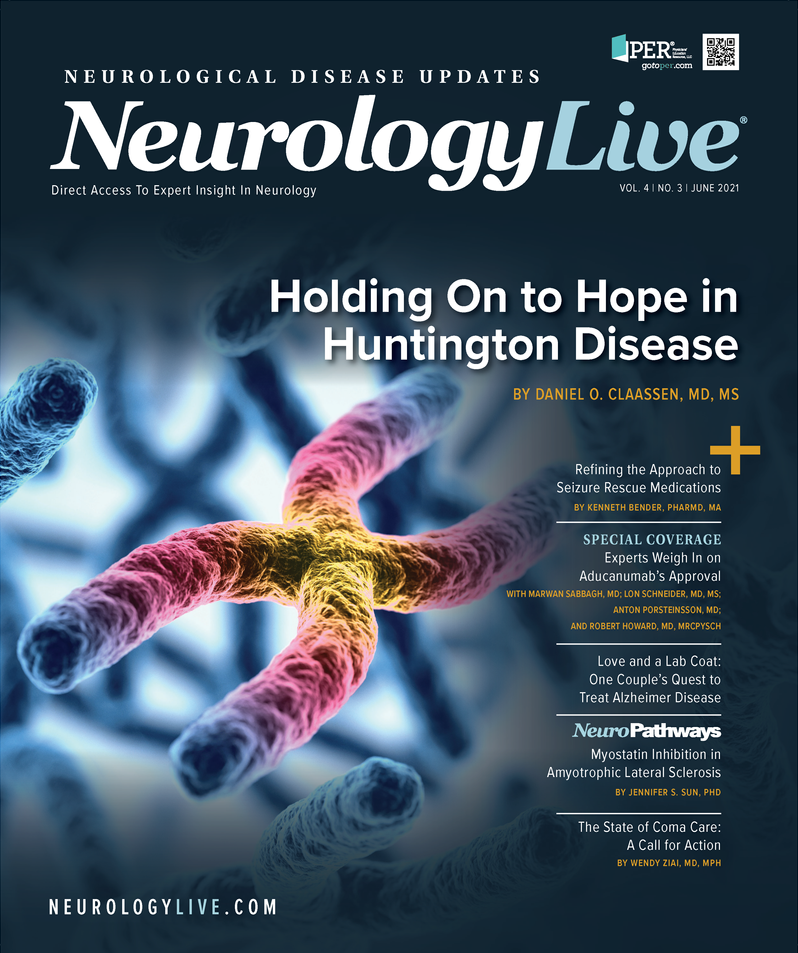Publication
Article
NeurologyLive
Treatment Disparities, Neurologic Complications Clarified by COVID-19 Neurological Research
Author(s):
The 2021 AAN Meeting Hot Topics plenary focused on neurological facets of COVID-19, and featured insight from Anthony Fauci, MD, of NIAID, and Walter Koroshetz, MD, of NINDS, among others.
Natalia Rost, MD, MPH, FAAN, FAHA

This year’s Hot Topics Plenary Session at the 2021 American Academy of Neurology (AAN) Annual Meeting, April 17-22, focused on neurological implications of COVID-19 and the data that has been collected to this point, now 1 year into the pandemic.
The plenary was hosted by Natalia Rost, MD, MPH, FAAN, FAHA, chief, stroke division, department of neurology and associate director, Massachusetts General Hospital Comprehensive Stroke Center, and professor, Harvard Medical School, along with Paul George, MD, PhD, MSE, assistant professor, neurology & neurological sciences, Stanford University.
It opened with a question and answer session with Anthony Fauci, MD, director, National Institute of Allergy and Infectious Diseases, and chief medical advisor to the president, and Walter Koroshetz, MD, director, National Institute of Neurological Disorders and Stroke, before moving on to 4 presenters.1
Fauci weighed in on the question of getting back to a pre-pandemic “normal,” noting that “as we get to the overwhelming majority of the population vaccinated, you are going to see a rather strong turning towards what you would consider much more normal than what [we] are living through right now.” He also speculated on the spectrum of disease severity that has been observed with COVID-19 and stated that its wildly differing effects on the population, with some experiencing no symptoms while others are dying, are still not well understood.
READ MORE: Deep Brain Stimulation Leads Advances in Neuromodulation for Movement Disorders
Another issue the pandemic has highlighted, Fauci said, is the disparities in health care between demographics. He discussed some actions the federal administration is taking to address these, including setting up community vaccine centers.
In response to a question on transmission risk, Fauci explained that studies are being conducted to clarify transmission of the virus in both asymptomatic and vaccinated people. He also stated his belief that antiviral therapies will be developed that will be able to efficaciously treat COVID-19.
Koroshetz, on his end, endorsed the neurological safety of COVID vaccines, stating that “the question of vaccines and different neurological conditions has been studied over the years. We don't have any real concerns about the COVID vaccine being any different.” He also discussed the early neurological effects of COVID-19, including penetration of olfactory and endothelial cells, as well as the increasing visibility of chronic fatigue syndrome in people that have had COVID—an area that needs more research. He also praised the rise of technological innovation during the pandemic and shared his optimism on the development of vaccines for other conditions, such as the Epstein-Barr virus.
As Fauci and Koroshetz took their leave, Sherry Chou, MD, MMSC, FNCS, associate professor, critical care medicine, neurology, and neurosurgery, University of Pittsburgh, began the first presentation by comparing the COVID-19 pandemic to the 1918 influenza pandemic. She discussed the debated origins of the 1918 encephalitis lethargica and how the phenomenon, following the 1918 flu, may be similar to neurological syndromes resulting from COVID-19. She outlined various causes of brain injury, from hypoxia to prolonged steroid and paralytic use for mechanical ventilation, as well as sedatives.
Chou discussed several studies that have investigated neurological complications with COVID-19, such as acute cerebral vascular diseases, impaired consciousness, and the development of acute encephalopathies with COVID-19 infection. She also mentioned the Global Consortium Study of Neurological Dysfunction in COVID 19 (GCS) that was formed to address and research these complications.
She presented findings from an analysis of the GCS, which consisted of 475 patients. The study found that hospital mortality rate was around 14% in the general cohort, but up to 25% in the cohort with neurological conditions. Similarly, the prevalence of stroke increased from 3.1% to 20% between the general and neurological condition cohorts, and the prevalence of seizure increased tenfold between cohorts. In addition to those factors, the study found that pre-existing neurological disorders and White ethnicity increased one’s risk of developing new neurological signs and disorders by more than twofold.2,3
Altogether, “having a clinically verified neurological sign syndrome increased mortality risk by as high as sixfold in hospitalized COVID-19 patients, specifically acute encephalopathy, which is the most common phenotype that we saw, increases the mortality risk by 5.5-fold. The risk factors for developing acute neurological signs and syndromes in this cohort include older age, male sex, White race, and specifically having a pre-existing neurological disorder was the most important predictor of developing new neurological signs and syndromes,” Chou said during her presentation.
Following Chou’s presentation was Nicte Mejia, MD, MPH, FAAN, assistant professor, neurology, Harvard Medical School, who shared her thoughts on disparities in care during the pandemic. “We continue to struggle with a complex web of health, economic and other societal complications. Critical among them is the amplification of pervasive long standing, health and healthcare disparities, including in neurology marginalized communities around the world continue to face an uneven burden of COVID-19,” she said.
Mejia outlined some disparities, including the fact that in the United States, indigenous Black and Latino communities are twice as likely to contract COVID-19, as well as twice as likely to be hospitalized for it. Similar associations are seen in people living in poverty. She discussed previous studies that found poorer outcomes in Black patients with COVID-19 and stroke, and posited unequal access to thrombectomy and thrombolysis as a major culprit.
She also detailed some larger disparities that are issuing from the COVID-19 pandemic, such as disability, quality of life, medical bankruptcy, and job and housing security. She rallied physicians to combat racism and marginalization and pushed for advances in healthcare equality. In order to accomplish this, she listed 3 priorities that she believes must be addressed: the creation of a single-payer national health program, medical licensure reform, and rebuilding a stronger and more equal public health infrastructure.4,5,6
Next, Serena Spudich, MD, MA, professor, neurology and division chief, neurological infections & global neurology, Yale School of Medicine, discussed neurological syndromes following acute COVID-19. These effects range from muscular complaints to cognitive complaints and mood and psychiatric complaints. “Fortunately, many people survived COVID-19, but it leaves us with the question of what may be happening long term in people who survived the acute illness, and are now living with the consequences,” Spudich said.
Her presentation covered a survey conducted with 4000 respondents from 56 countries that reported mainly cognitive issues, such as speech and language issues, sensation changes like changes of smell and taste, and a variety of different psychiatric syndromes. Another abstract, presented at AAN 2021 by Lindsay McAlpine, MD, Yale University School of Medicine, reported that stroke in younger patients was associated with inflammation and endothelial activation or endothelial apathy.7
Other studies led Spudich to posit that patients with underlying neurological syndromes may have altered immune responses to SARS-CoV-2 infection. She discussed a few case studies, as well as a study being conducted at Yale that is looking at effects of COVID infection in patients with HIV infection.
"One of the key takeaway messages here is there's not a single entity of a post COVID neurological syndrome. After COVID, there's actually a panoply of different syndromes that may have similar etiologies or may have actually distinct etiologies,” Spudich said.
The last presentation of the session was given by Igor Koralnik, MD, FAAN, neuroinfectious disease, Northwestern Medicine, who discussed different COVID and antibody tests. Early COVID tests, he said, were not well-calibrated to mild disease cases, and while sensitivity has been much improved since then, tests are not perfect. Commercial antibody tests also have varying sensitivities to different levels of COVID infection severity and may not accurately reflect SARS-CoV-2 immunity.
“The take home message is that there's really no gold standard test for SARs-CoV-2 infection in individuals with mild disease,” Koralnik said. He discussed several studies, including the Post-Acute Sequelae of COVID-19 (PASC) study, which has so far found that patients with long-term effects of COVID have T-cells that respond to SARS-CoV-2 spike proteins, while asymptomatic and patients with previous infection without long-term effects do not.
Koralnik also discussed different responses to COVID vaccines. He discussed positive results seen in the trials of the Pfizer, Moderna, and Johnson & Johnson vaccines in preventing hospitalization and death, as well as incidence of adverse events. He briefly touched on the cases of cerebral venous thrombosis seen in response to the Johnson & Johnson vaccine to say that they are being studied and nothing conclusive has been found yet, after closing by discussing the trends in vaccine hesitancy and the possible future of vaccine cards and passports.
REFERENCES
1. Rost N, George A, Fauci A, et al. Hot Topics: Neuro-Covid plenary session. Presented at 2021 American Academy of Neurology Annual Meeting; April 17-22.
2. Safonova A, Paul N, Altamirano V, et al. Neurologic manifestations associated with COVID-19 in hospitalized patients. Presented at 2021 American Academy of Neurology Annual Meeting; April 17-22. Abstract P17 040
3. Sharma A, Ratnayake C, Paul N, et al. Effect of the COVID-19 pandemic on ICU ischemic and hemorrhagic stroke outcomes. Presented at 2021 American Academy of Neurology Annual Meeting; April 17-22. Abstract P17 038
4. Villa A, Arrejoria R, Gomez A, et al. Neuro-immunological disorders during the COVID-19 pandemia: an Argentinian hospital based study. Presented at 2021 American Academy of Neurology Annual Meeting; April 17-22. Abstract P2 004
5. Ellin M, Ayele A, Jobin J, Brady T, Mejia N. Feasibility and short-term outcomes of the MGH Youth Neurology Education and Research Program. Presented at 2021 American Academy of Neurology Annual Meeting; April 17-22. Abstract S23 001.
6. Vanotti SI, Eizaguirre M, Roman M, et al. Importance of detecting clinical and cognitive variables to mitigate unemployment in patients with Multiple Sclerosis in Argentina. Presented at 2021 American Academy of Neurology Annual Meeting; April 17-22. Abstract P15 036
7. McAlpine MS, Zubair A, Maran I, et al. Ischemic stroke, inflammation, and endotheliopathy in COVID-19 patients. Presented at 2021 American Academy of Neurology Annual Meeting; April 17-22. Abstract P5 016





